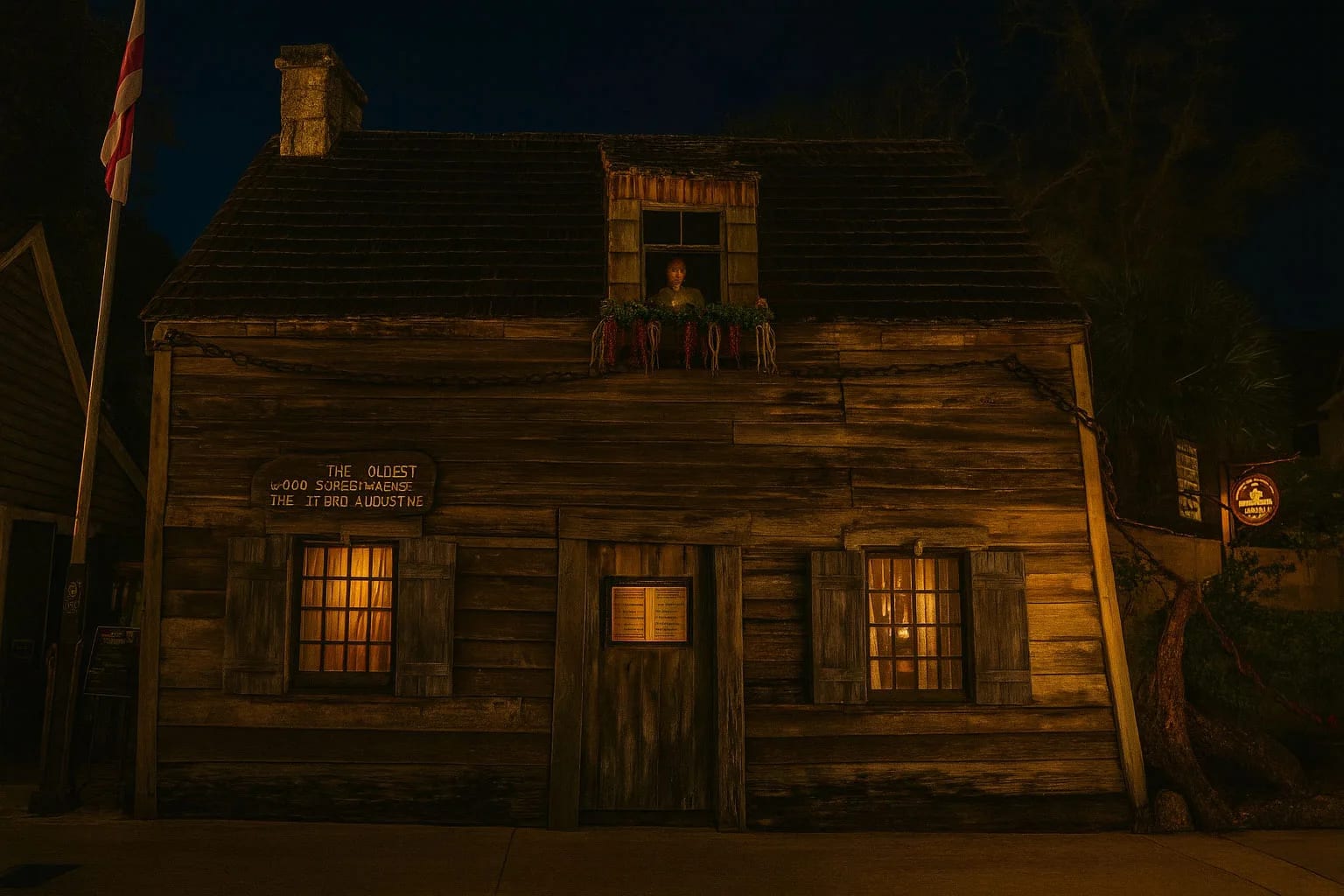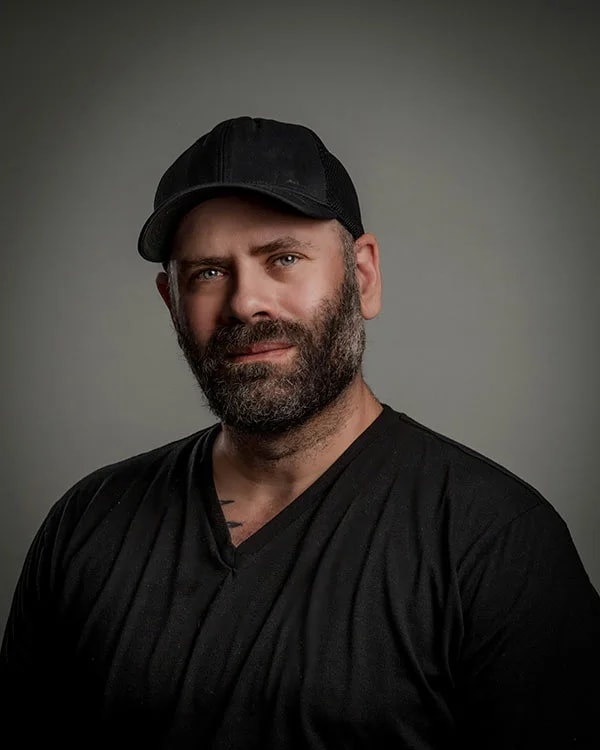Lessons That Never End
Constructed around 1716 from red cedar and cypress planks held together with wooden pegs and handmade nails, the Oldest Wooden Schoolhouse in St. Augustine stands as America's oldest surviving wooden educational building—and quite possibly its most haunted. This modest one-room structure served the children of Spanish colonial families for over 150 years, providing education in reading, writing, arithmetic, and Catholic catechism to generations of St. Augustine's youth. The schoolhouse's thick wooden walls and low-beamed ceiling created an intimate learning environment where strict discipline and rote memorization shaped young minds according to Spanish colonial educational principles. Yet the building's most memorable lesson came not from any textbook, but from the tragic yellow fever epidemic of 1732 that claimed the lives of both the schoolmaster and several students while class was in session. These souls, caught in the act of learning and teaching, have remained at their posts for nearly three centuries, continuing their educational mission in the supernatural realm. Visitors to this National Historic Landmark consistently report encounters with phantom children reciting lessons in colonial Spanish, the sound of a stern teacher conducting classes for invisible students, and the overwhelming sensation that they have interrupted a classroom session that has been in progress for almost 300 years.
Education and Tragedy in Colonial Florida
The Oldest Wooden Schoolhouse was constructed around 1716 to serve the educational needs of St. Augustine's growing Spanish colonial population, who required formal instruction for their children in both secular subjects and Catholic religious doctrine. The building was designed according to Spanish colonial educational standards, featuring a single large classroom that could accommodate up to thirty students of varying ages, from young children learning their letters to teenagers preparing for adult responsibilities. The schoolhouse operated under the supervision of the Catholic Church, with teachers required to integrate religious instruction throughout the curriculum while maintaining strict discipline that reflected Spanish colonial values of obedience and respect for authority. Don Francisco Pellicier, a Spanish colonial teacher educated in Havana, served as the school's first and most influential headmaster from 1720 until his death in 1732. Under his leadership, the schoolhouse gained a reputation for academic excellence, producing graduates who became prominent merchants, craftsmen, and colonial officials throughout Spanish Florida. The tragic turning point came during the devastating yellow fever epidemic of 1732, when Don Francisco refused to close the school despite the spreading disease, believing that education was too important to suspend even during a health crisis. On September 12, 1732, the epidemic reached its peak when Don Francisco and eight of his students died within hours of each other while conducting a Latin lesson, their bodies discovered days later still seated at their desks in the positions they had occupied during their final class. The schoolhouse continued to operate under various teachers throughout the Spanish and British colonial periods, though subsequent educators and students consistently reported strange disturbances that suggested the original occupants had never truly departed.
The Eternal Classroom
The dominant spirit of the Oldest Wooden Schoolhouse is Don Francisco Pellicier himself, whose dedication to education transcended death and continues to manifest in the supernatural realm. Visitors consistently report encounters with a stern figure in 18th-century Spanish dress standing at the front of the classroom, pointing to invisible chalkboards and conducting lessons in colonial Spanish for students who exist only in the spirit world. Don Francisco's phantom voice is often heard reciting Latin conjugations, mathematical problems, and Catholic catechism, always maintaining the strict disciplinary tone that characterized Spanish colonial education. His presence is accompanied by the distinctive sound of a wooden ruler tapping against a desk and the authoritative clearing of his throat that once called unruly students to attention. The schoolhouse also harbors the collective spirits of the children who died during the 1732 epidemic, their ghostly presence manifesting as the sound of young voices reciting lessons in unison, the scraping of quill pens on slate tablets, and the rustle of colonial-era school uniforms during phantom classroom activities. These child spirits appear most frequently to young visitors, often attempting to include them in their eternal lessons or beckoning them to take seats at the small wooden desks that still occupy the classroom. Perhaps most poignant is the spirit of little Maria Esperanza, the youngest victim of the epidemic, who was only six years old when she died. Her ghost appears as a sad little girl in colonial dress, often seen sitting alone at her desk, weeping silently for the family she was trying to learn to write letters to when the fever claimed her life. Maria's spirit is particularly active during school hours and seems drawn to modern children, sometimes reaching out to touch their hands or attempting to share her slate tablet as if seeking the playmates she lost nearly three centuries ago.
Supernatural School Sessions
Paranormal activity at the Oldest Wooden Schoolhouse follows a distinct pattern that mirrors the structured schedule of colonial-era education, with the most intense phenomena occurring during traditional school hours—9 AM to 3 PM—when the phantom classes seem to be in session. Visitors consistently report hearing the sound of multiple children reciting lessons in Spanish, the scratching of quill pens on slate, and the authoritative voice of Don Francisco conducting educational exercises for invisible students. The schoolhouse's wooden construction seems to amplify supernatural audio phenomena, creating an acoustic environment where phantom voices carry clearly throughout the single-room structure. Temperature fluctuations are dramatic and sudden, with certain areas of the classroom maintaining supernatural cold spots that correspond to the desks where epidemic victims were seated during their final lesson. Electronic equipment behaves erratically, with digital cameras producing mysterious photographs of the empty classroom that show period-dressed figures seated at the antique desks, and audio recordings capturing classroom sounds from an era when such technology did not exist. The schoolhouse's antique desks and educational materials move independently, with quill pens found arranged in perfect lines, slate tablets displaying mysterious writing in colonial Spanish, and wooden chairs positioned as if students had just risen for recess. During the anniversary of the 1732 epidemic—particularly on September 12th—the schoolhouse becomes extraordinarily active, with witnesses reporting the full manifestation of the final yellow fever class, complete with the sounds of illness, the teacher's concerned voice, and the tragic moment when the epidemic claimed its classroom victims. Modern school groups visiting the building often report that their students become unusually quiet and attentive, as if responding to the supernatural authority of Don Francisco's continued presence.
Attending the Phantom Academy
The Oldest Wooden Schoolhouse offers visitors a unique educational and paranormal experience that combines American colonial history with authentic supernatural encounters in the nation's oldest surviving classroom. The building operates as a historic site with regular tours that explore both its educational significance and paranormal reputation, making it an ideal destination for families, history enthusiasts, and ghost hunters alike. Morning visits during traditional school hours provide the most intense supernatural experiences, as this is when Don Francisco's spirit conducts his phantom classes with greatest regularity. Children visiting the schoolhouse often report the most compelling encounters, as the child spirits seem particularly eager to interact with young visitors and include them in their eternal lessons. Photography is encouraged throughout the schoolhouse, as the building consistently produces remarkable paranormal evidence including period-dressed figures seated at desks, mysterious writing appearing on blank slate tablets, and orbs that seem to respond to educational activities. Visitors should come prepared to participate respectfully in the ongoing supernatural education, as Don Francisco's spirit maintains the same strict classroom discipline he enforced in life and expects appropriate behavior from all who enter his domain. The schoolhouse's compact size creates an intimate environment where every visitor can experience the full intensity of the paranormal activity, making it particularly effective for those seeking direct spiritual encounters. Educational groups will find the schoolhouse especially rewarding, as the combination of historical significance and supernatural activity creates a memorable learning experience that brings colonial education to life in ways that traditional museums cannot match. The building's location in the heart of St. Augustine's historic district makes it an excellent stop on walking tours that explore the city's haunted heritage while providing educational context for understanding colonial life in America's oldest city.

Where Don Francisco still conducts eternal lessons

Little Maria Esperanza's desk where she writes to family

The headmaster who never dismissed his final class

